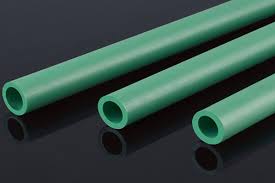Dec . 18, 2024 12:13 Back to list
ppr pipe for water supply products
PPR Pipes for Water Supply A Comprehensive Overview
Polypropylene Random Copolymer (PPR) pipes have emerged as a popular choice for water supply systems across the globe. Renowned for their durability, chemical resistance, and ease of installation, PPR pipes offer numerous advantages over traditional materials such as PVC and metal pipes. In this article, we will explore the characteristics, benefits, installation techniques, and applications of PPR pipes in modern water supply systems.
Characteristics of PPR Pipes
PPR pipes are made from a type of thermoplastic known as polypropylene. This polymer is ideal for applications that require both flexibility and strength. PPR pipes are available in various diameters and pressure ratings, making them versatile for different water supply needs. The pipes typically have a green or gray color, with various fittings available in coordinating shades.
One of the key characteristics of PPR pipes is their ability to withstand high temperatures. With a maximum temperature tolerance of up to 95°C (203°F), they make suitable choices for both hot and cold water applications. Additionally, PPR pipes possess excellent resistance to chemical corrosion, which ensures long-term reliability in various environments.
Benefits of PPR Pipes
PPR pipes offer a plethora of benefits that make them a preferred option for plumbing and water supply systems
1. Durability Unlike metal pipes that can corrode over time, PPR pipes are resistant to scale buildup and rust. This durability allows for a longer lifespan, often exceeding 50 years.
2. Weight and Ease of Handling PPR pipes are significantly lighter than metal pipes, which simplifies transportation and installation. This lightweight characteristic reduces installation labor costs and the need for heavy machinery.
3. Low Thermal Conductivity PPR pipes have lower thermal conductivity compared to metal options. This feature helps in maintaining the water temperature and reduces energy consumption associated with heating systems.
4. Environmental Impact PPR is a recyclable material, making it an environmentally friendly choice. The production process emits fewer harmful substances compared to metal pipe manufacturing.
ppr pipe for water supply products

Installation Techniques
Installing PPR pipes requires specific techniques to ensure a reliable and leak-free system. The most common method is heat fusion welding, where the pipes are heated to a specific temperature and then joined together. This creates a homogeneous bond that limits the potential for leaks and enhances the system's integrity.
Professionals recommend using specially designed PPR fittings to further improve the quality of the installation. Additionally, PPR systems should be tested for pressure after installation to verify that all joints are secure and meet the required standards.
Applications of PPR Pipes
Due to their versatility, PPR pipes find applications in various sectors
1. Residential Water Supply PPR pipes are widely used in homes for both hot and cold water supply systems. Their resistance to scale and corrosion ensures clean and safe drinking water.
2. Commercial Buildings In commercial settings, PPR pipes are used for plumbing systems, heating, and cooling applications, where efficiency is a priority.
3. Industrial Applications PPR pipes are suitable for transporting chemicals and hot water in various industrial environments due to their chemical resistance.
4. Agricultural Use PPR pipes are also employed in irrigation systems, providing a reliable solution for water supply in farming.
Conclusion
PPR pipes are undoubtedly a game-changer in water supply systems. Their remarkable properties, coupled with significant advantages over conventional materials, make them an excellent choice for a variety of applications. As demand for efficient, durable, and environmentally friendly piping solutions continues to rise, PPR pipes will likely play an increasingly essential role in plumbing and infrastructure development worldwide. Investing in PPR technology not only enhances performance but also contributes to sustainable resource management.
-
High-Quality PVC Borehole Pipes Durable & Versatile Pipe Solutions
NewsJul.08,2025
-
High-Quality PVC Perforated Pipes for Efficient Drainage Leading Manufacturers & Factories
NewsJul.08,2025
-
High-Quality PVC Borehole Pipes Durable Pipe Solutions by Leading Manufacturer
NewsJul.08,2025
-
High-Quality PVC Borehole Pipes Reliable PVC Pipe Manufacturer Solutions
NewsJul.07,2025
-
High-Quality UPVC Drain Pipes Durable HDPE & Drain Pipe Solutions
NewsJul.07,2025
-
High-Quality Conduit Pipes & HDPE Conduit Fittings Manufacturer Reliable Factory Supply
NewsJul.06,2025

